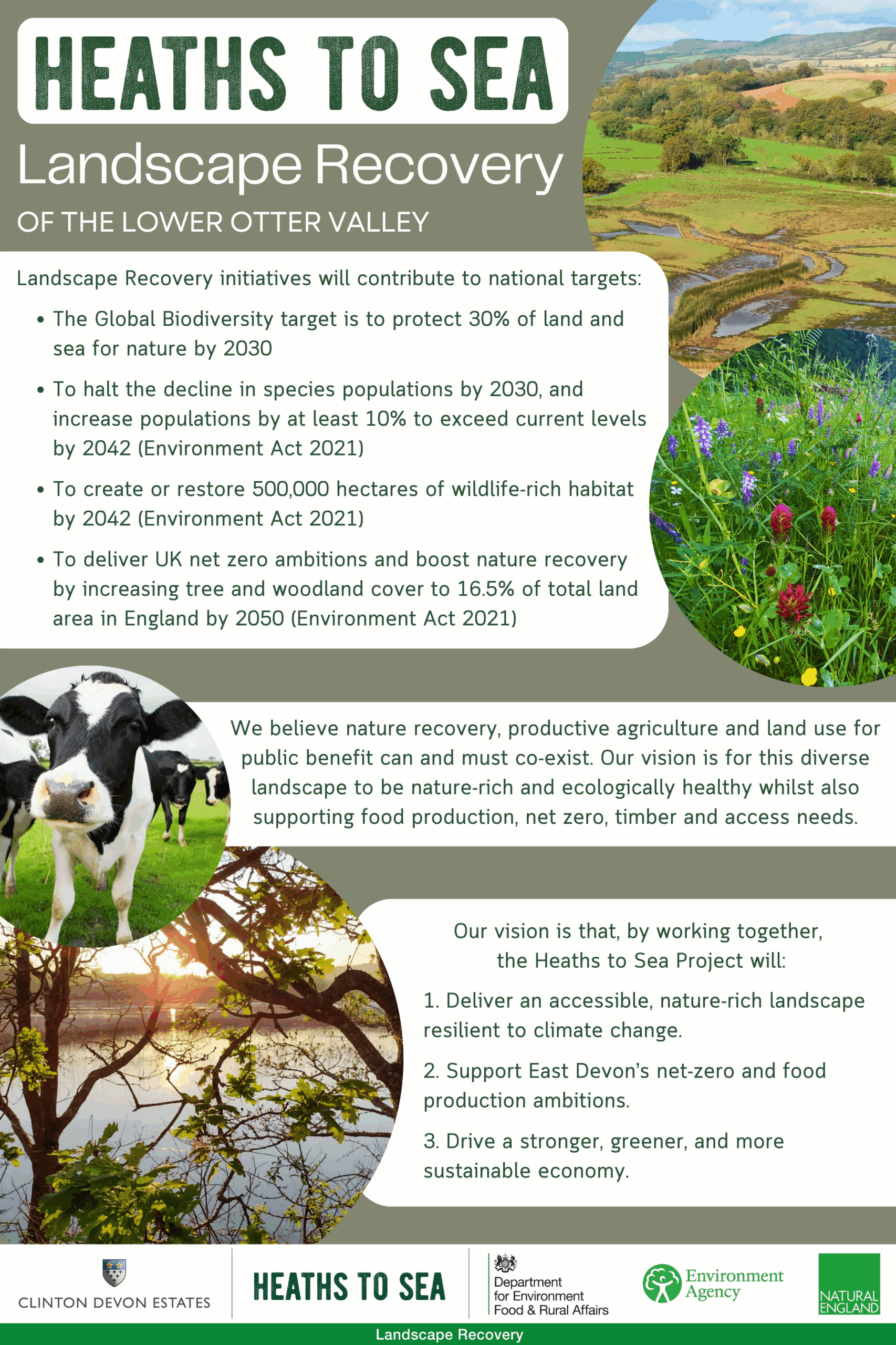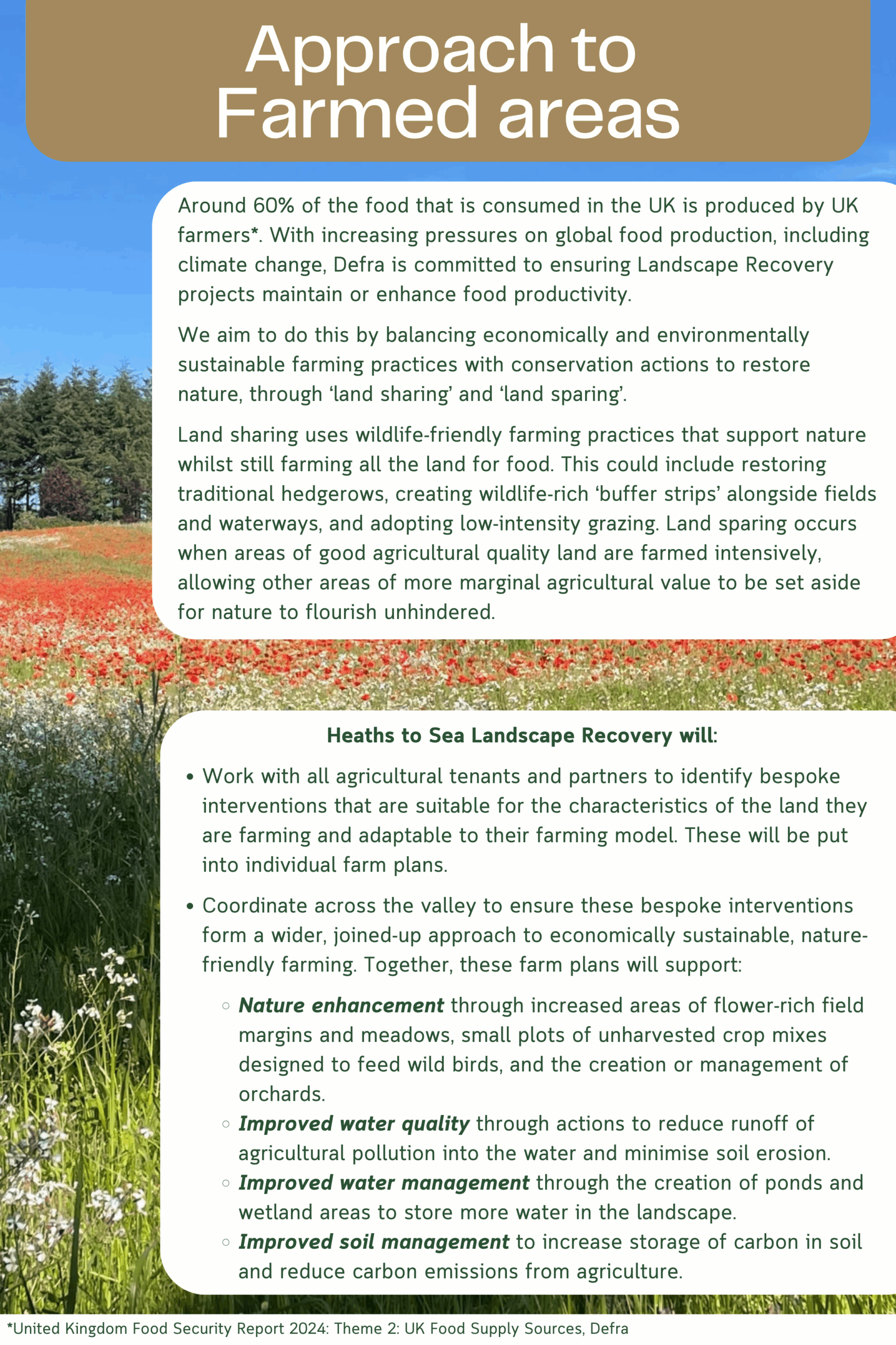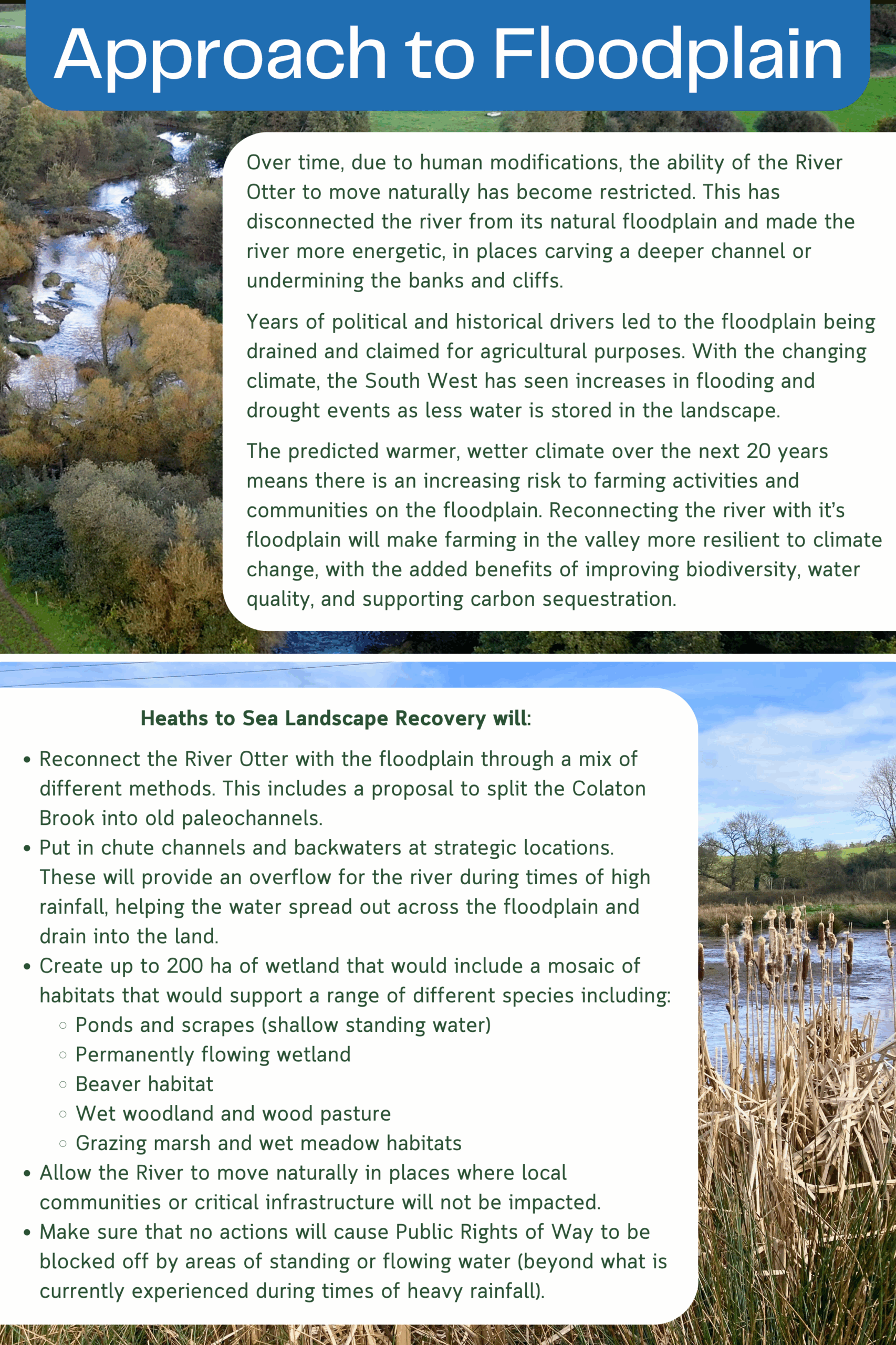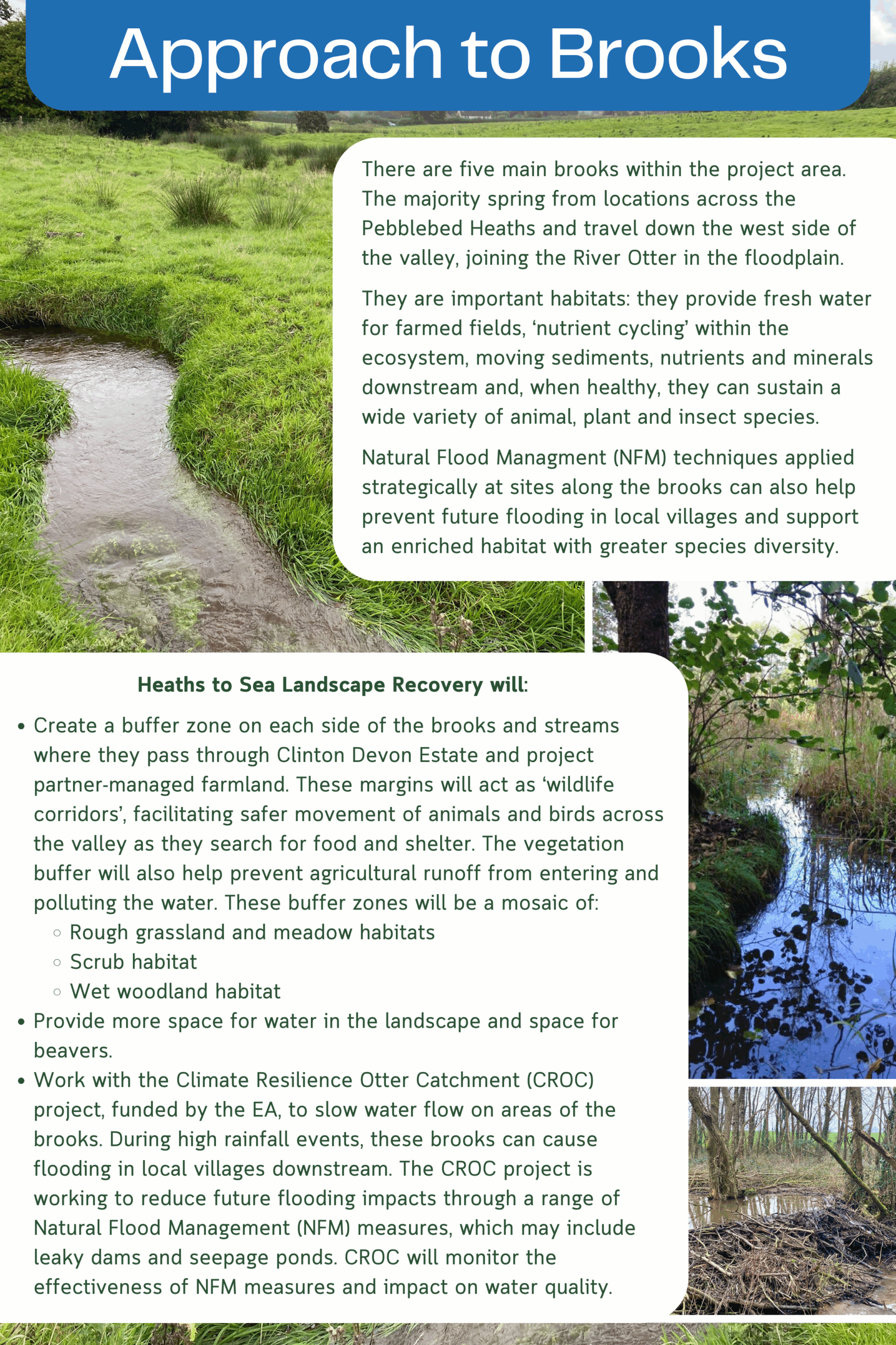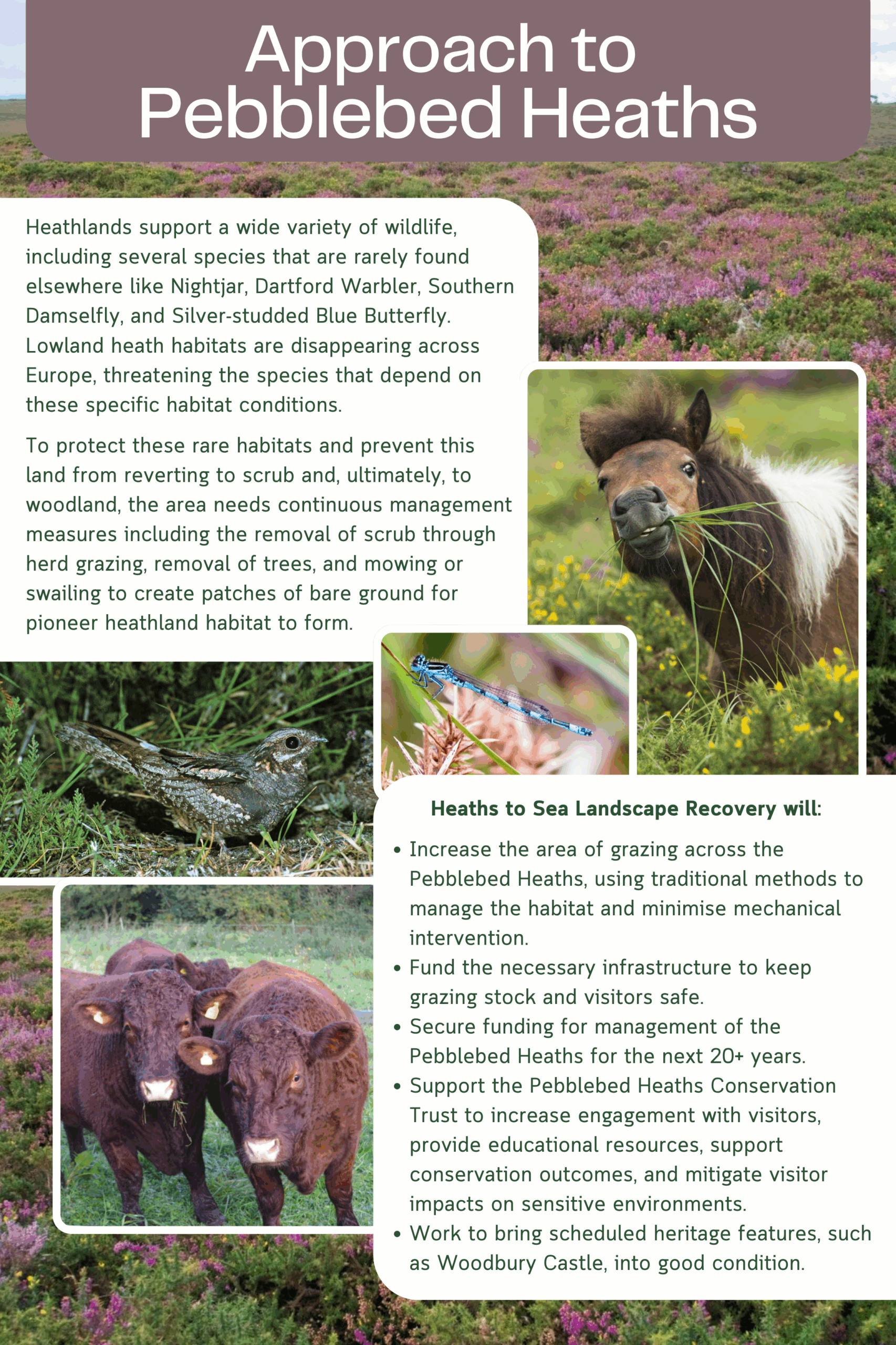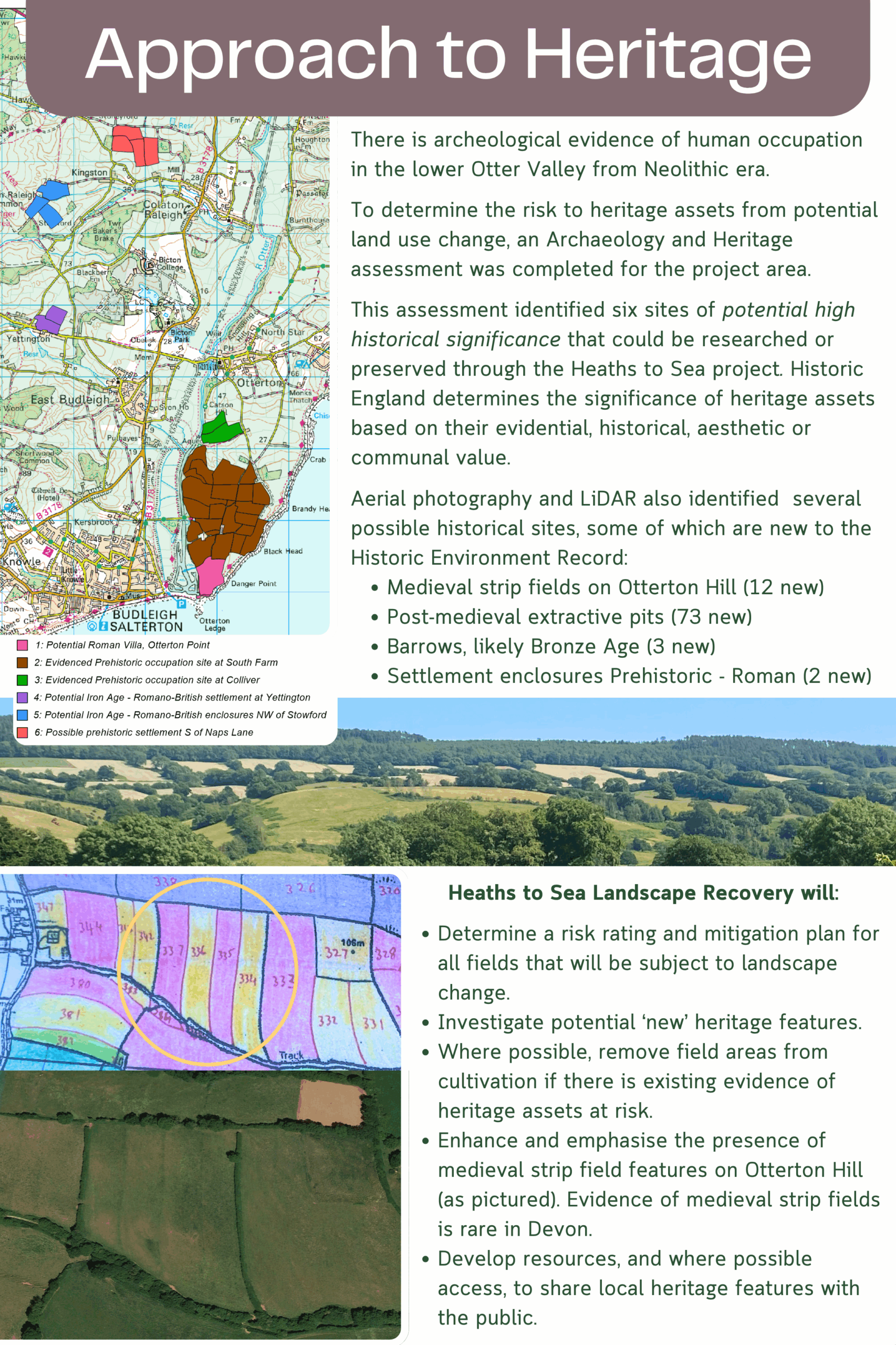Draft Plans
Clinton Devon Estates is leading the Heaths to Sea Landscape Recovery project in collaboration with tenant farmers, Devon Wildlife Trust, Bicton College, and RSPB.
Landscape Recovery Projects were introduced by Defra to support landowners and land managers in taking an ambitious, large-scale approach to nature restoration, while also addressing broader priorities such as sustainable food production.
Our draft proposals for the Heaths to Sea Landscape Recovery Project were unveiled at a public forum held at Bicton College in July 2025.
Summary
Covering 4,666 hectares across the lower River Otter catchment, the Heaths to Sea project aims to create a thriving, diverse landscape that supports nature, climate resilience, sustainable farming, and public access.
Proposals include the creation of up to 100 hectares of productive woodland with climate-resilient conifer and broadleaf species. An additional 185 hectares will be transformed into wood pasture and scrub mosaic habitats, grazed by traditional livestock breeds. Selective thinning and species diversification will enhance existing woodlands, creating a more natural woodland structure and enhancing biodiversity.
Another important aim is to reconnect the river to its floodplain through the development of 200 hectares of wetland, including ponds, wet woodland, and grazing marsh. Buffer zones along field edges and tributaries will provide vital wildlife corridors.
In fertile agricultural areas, the project will support farmers in continuing to grow food while supporting nature through sustainable, nature-friendly agricultural and conservation practices, alongside their existing farm model.
Our vision
We believe nature recovery, productive agriculture, and land use for public benefit can and must co-exist. Our vision is for this diverse landscape to be nature-rich and ecologically healthy whilst also supporting food production, net zero, timber and access needs.
Our aim is to create a nature-rich landscape that is accessible to all and resilient to the impacts of climate change. By working together, we will support East Devon’s ambitions for achieving net-zero emissions while maintaining sustainable food production. Through this collaborative effort, we also intend to drive a stronger, greener, and more sustainable local economy.
Our approach
Below we have outlined our proposals for the Heaths to Sea Landscape Recovery project. The exhibition posters displayed at the Public Forum can be found here.
Our draft plans will now be submitted to Defra in March 2026, following a Government-approved extension from the original submission date of December 2025. If the final plans are supported by the Government, implementation will begin in autumn 2026 and continue for at least 20 years.
At each stage of the project, the Heaths to Sea team will continue to work closely with tenant farmers, partners and local communities to balance the needs of farming, nature and people. The article Rising to the challenge: restoring landscapes for nature and people explores some of the challenges.

